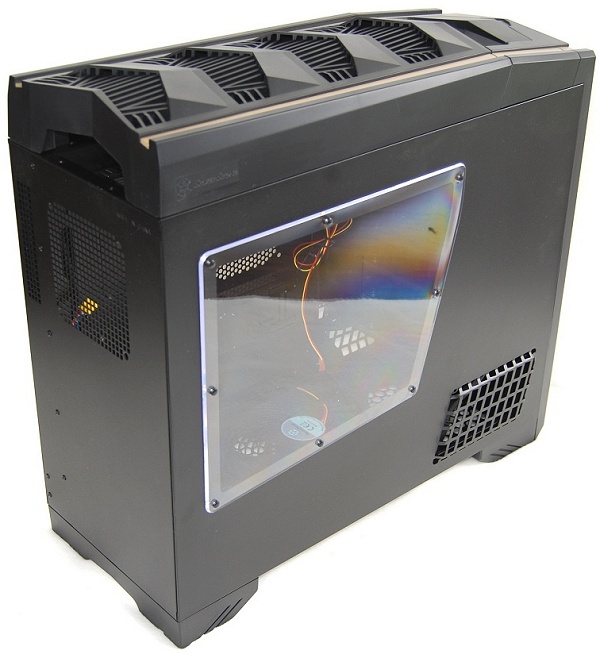RV03 External Design
From the front, the Silverstone Raven 3 resembles a mid-tower, measuring just 20.5" (522mm) tall. In addition to being 0.7" (19mm) taller than the Raven 2 Evolution, the RV03 also looks considerably more aggressive with hard "V"-shaped patterns and sharp lines.
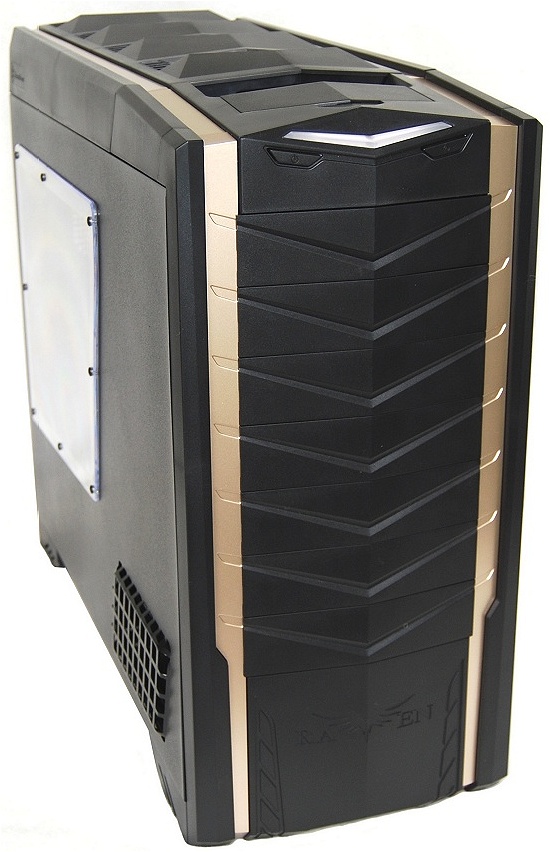

We found the RV02's façade to be somewhat bland compared to other high-end computer cases, but it's difficult to say whether we prefer the Raven 3's implementation. Although it's flashier, it's not quite as classy – the gold strips are particularly tasteless in our opinion.

It might seem unusual that the Raven 3 has one less 5.25" bay than the Raven 2 (seven versus eight) considering it's a tad taller, but by removing one bay Silverstone was able to place the power and reset buttons on the front of the case instead of the top.

This will provide easier access to users that wish to place the Raven 3 under their desk, for example. The very top of the front features a "V"-shaped band that houses blue power and activity LEDs and this is largely unchanged from the original and second generation versions.
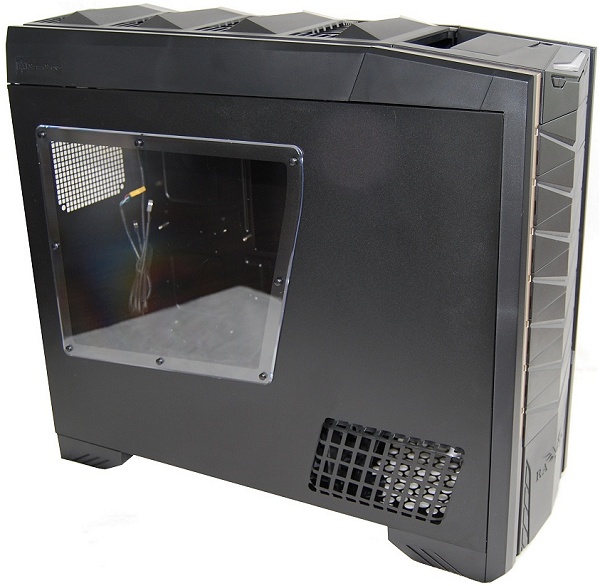
The Raven 3 is 11% shorter (depth-wise) than the Raven 2 Evolution – the sausage dog of computer cases. By being nearly 3" shorter at 22.4", the Raven 3 looks more natural, is far more manageable, and at 11.4kg, it sheds roughly 9% of the Raven 2's weight in the process.
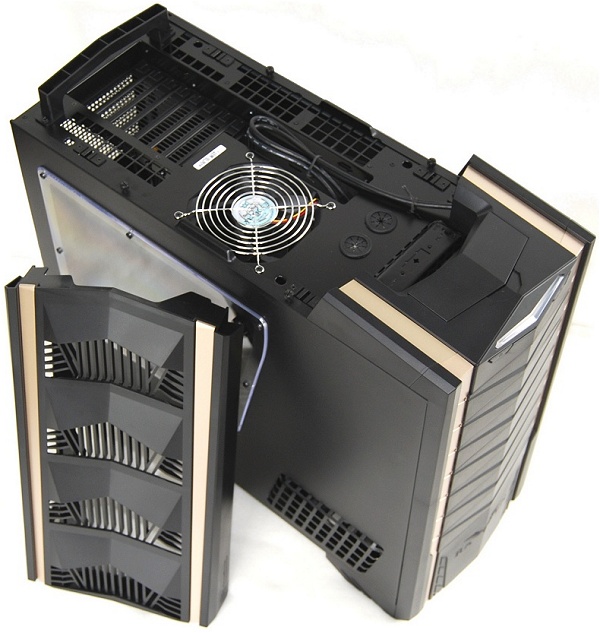

With the system's guts rotated by 90-degrees, the motherboard and expansion connectivity protrude from the top of the case and are covered by a well-ventilated lid. The front panel connectors, including a pair of audio jacks and USB 3.0 ports, are placed on top too.

Although the Raven 3 borrows many elements from its predecessors, there are some changes under the top cover: the power supply bracket is no longer present, USB 2.0 ports have been upgraded to 3.0, and the fan controller is accessible without removing the lid.
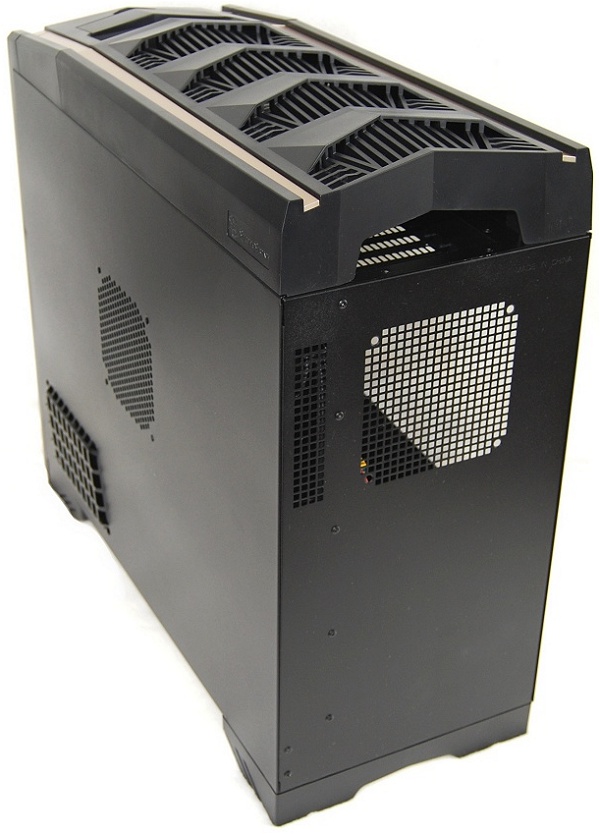
The rear of the Raven 3, where you would typically find fans and motherboard connections, has nothing but a single 120mm fan grill. It is worth pointing out that the Raven 3 is painted black inside and out which is not a feature that many cases offer in this price range.
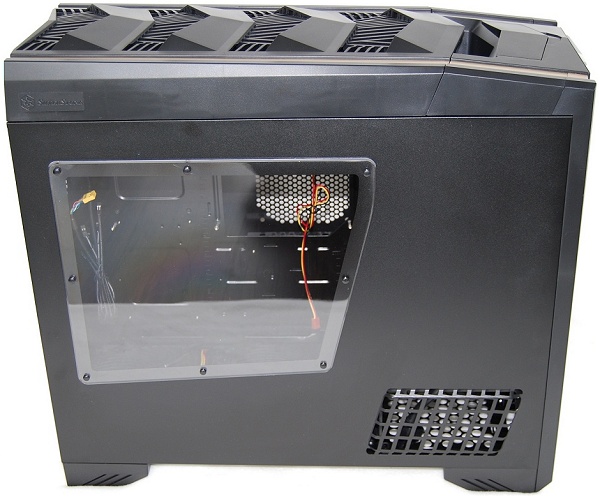
The left side of the case is covered by a long, free-flowing door with a window to show off your hardware. Previously featureless, Silverstone has upgraded the right door with a 120mm fan grill as well as a large grill in the bottom left corner. In order to remove the case doors, you must unclip the lid at the top of the Raven 3 and then undo a pair of thumbscrews holding the door in place.
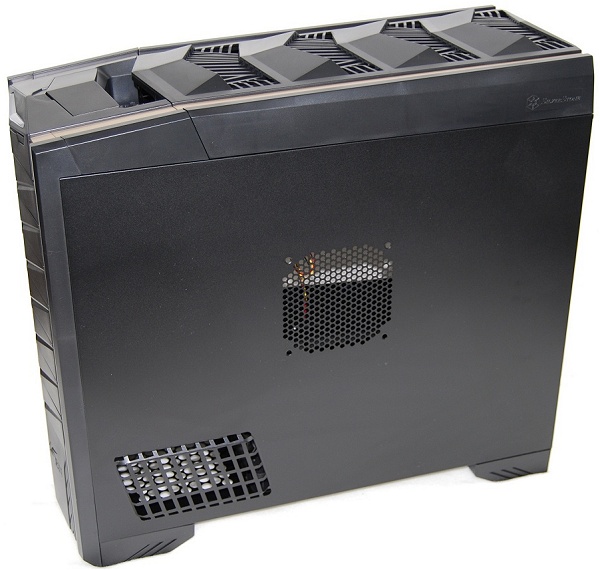
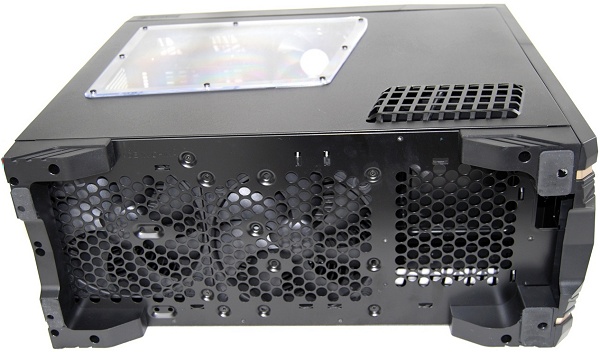


Flipping the Raven 3 upside down reveals two massive fan grills that intake large volumes of cool air. The case has four feet raising it 1.57" (40mm) off the ground, and this height is important as it allows enough air to be sucked under the case by the internal fans. We consider this to be a significant improvement over the Raven 2 Evolution, which was raised only 0.98" (25mm) off the ground.


As we noted, Silverstone has changed the location of the power supply. Instead of being directly accessible on the top or rear of the chassis, the PSU is mounted entirely inside the case. For external access, Silverstone has installed a small cable that attaches to the PSU and extends to the bottom of the Raven 3 – an interesting but mildly annoying deign aspect in our opinion.
What this ultimately means is that after a bulk of your cables are installed under the top lid, you'll have to get on all fours and jack up the Raven 3 to insert the power cable. While we admit it's probably no big deal if you're the "set it and forget it" type, it could prove to be a serious pain in the proverbial for your average hardware buff who frequently upgrades or cleans their system.

Unfortunately, users with liquid cooling systems will have to break out the toolbox and get their hands dirty. If you recall back to our Raven 2 Evolution review, we noted that its predrilled radiator holes were situated under the bottom intake fans, effectively limiting airflow. On top of being obstructed, the intake fans would receive the radiator's warm air, making the cooling system far less efficient.
Silverstone appears to have recognized this fault but instead of moving the radiator holes, they've scrapped them altogether, forcing users to fend for themselves. On the bright side, we imagine if you're using a liquid cooling system, you're probably accustomed to PC modifications. If you plan to go this route, the back of the case seems like a smart place to start as it's largely unoccupied by default.
